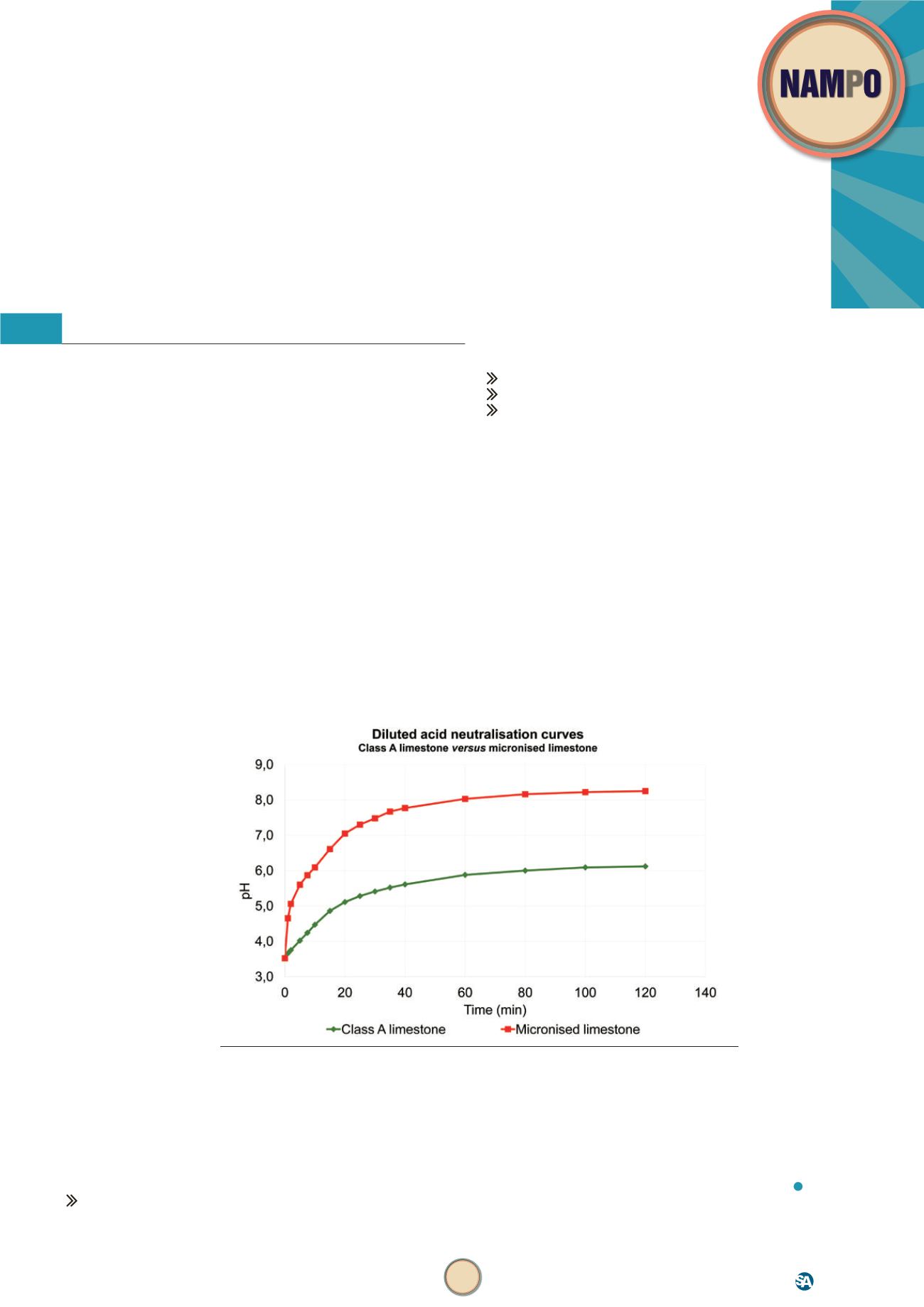

87
www.nampo.co.zaGraan|Grain
T
he entire agricultural community, from small scale and com-
mercial producers, through agent networks, commercial
and agricultural economists to as widespread as university
researchers and experts, is pondering on the effect of lime-
stone mineralogy, limestone fineness and the granulation of
fine limestones on the efficiency of soil neutralisation.
Producers employing conservation agriculture specifically,
report problems in liming deeper soil layers as their soils are not
tilled. Granulated fine limestones may offer a solution to the prob-
lem as the lime granules can be placed with the seed, deeper
in the soil during planting. Fine limestones might also be able to
permeate the soil more effectively than regular class A crushed
limestone sources due to higher solubility, whereas granulation
offers the additional advantage of reducing or completely elimi-
nating the loss of valuable fines due to windy conditions during
spreading.
Industry and academia – partnering
for purposeful, practical research
SA Lime & Gypsum is at the forefront of current research to develop a
quick and reliable comparative laboratory tool to approximate the
neutralisation kinetics
and time-constrained
capacity of standard
limestones versus mi-
cronised and/or granu-
lated materials.
In collaboration
with various research
teams at the Stellen
bosch University, we
are also looking at
comparing the soil
permeation of these
limestone
sources
and their physical
forms in soils with
widely different tex-
tures as well as the
placement effect of
the various materials
on plant root and
shoot growth as well
as calcium (Ca) up-
take. Since wind loss-
es are becoming a crucial dynamic in an environment where
fast changing climate factors are affecting the timing of fertili-
sation and planting, we have included various wind loss simula-
tion studies in the research design.
The research, which was initiated in 2017 at the company’s
central laboratory facility in Gauteng, consists of four different
assessments:
A laboratory study of the kinetics of weak acid neutralisation
combined with a time-based lime incubation neutralisation
study;
a lime penetration study in various soils;
a small pot-trial to assess plant response; and
an extensive field trial matrix incorporating the effects of
no-till versus different tilling methods on soil response, using
normal versus micronised limestone sources.
This work is conducted by a team consisting of the company’s inter-
nal research scientists and analytical chemists together with various
soil scientists, agronomists and master’s degree students from the
Stellenbosch University.
Using reaction kinetics to compare
time-based neutralisation efficiency
SA Lime & Gypsum enjoys the enormous benefit of a purposeful
laboratory at our processing facility and distribution depot in
Olifantsfontein, Gauteng. Here, a designated experimental setup,
designed and built in-house by professional scientists, is used to ap-
proximate the reaction kinetics of neutralisation of limestone in a
weak acidic environment.
The experimental design utilises the principles of forced
first-order reaction kinetics at stoichiometric excess limestone
addition rates.
Graph 1
illustrates this principle and shows
the difference be-
tween a class A
limestone and a mi-
cronised
product.
The same setup can
also be used to de-
termine the amount
of limestone needed
to neutralise a fixed
amount of acid, from
which the experi
mental usage factor
can be determined.
Initial results are
very promising and
pending the out-
comes from the field
trials and a potential
correlation between
that and these labo-
ratory results, we are
determined to pro-
vide market defining
information on the
exciting prospects of using micronised limestone – not only as
an effective way of providing essential macro-elements in the
furrow but also as a highly effective deep-penetrating soil im-
prover. SA Lime & Gypsum and its collaborators intend to make
this information available to the broader community through
various channels in the public domain to serve the agricultural
community of South Africa for the benefit of all.
Dr Jaco Erasmus,
SA Lime & Gypsum
, Dr Pieter Swanepoel
and
Dr Ailsa Hardie,
Stellenbosch University
From lab to field
– research for the greater good
Graph 1: The difference between a class A limestone and a micronised product.
P
2019
Product
information
















